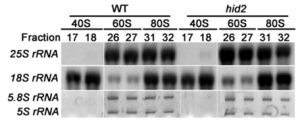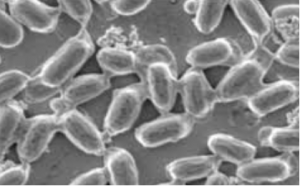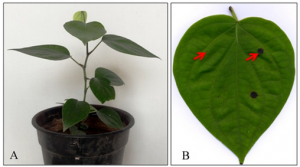|
CRISPR/Cas9 somatic multiplex-mutagenesis for high-throughput functional cancer genomics in mice
Saturday, 2015/11/14 | 08:12:27
|
|
Julia Weber, Rupert Öllinger, Mathias Friedrich, Ursula Ehmer, Maxim Barenboim, Katja Steiger, Irina Heid, Sebastian Mueller, Roman Maresch, Thomas Engleitner, Nina Gross, Ulf Geumann, Beiyuan Fu, Angela Segler, Detian Yuan, Sebastian Lange, Alexander Strong, Jorge de la Rosa, Irene Esposito, Pentao Liu, Juan Cadiñanos, George S. Vassiliou, Roland M. Schmid, Günter Schneider, Kristian Unger, Fengtang Yang, Rickmer Braren, Mathias Heikenwälder, Ignacio Varela, Dieter Saur, Allan Bradley, and Roland Rad SignificanceAssigning biological relevance and molecular function to large catalogues of mutated genes in cancer is a major challenge. Likewise, pinpointing drivers among thousands of transcriptionally or epigenetically dysregulated genes within a cancer is complex and limited by the lack of tools for high-throughput functional cancer genomic analyses. We show here for the first time, to our knowledge, application of the CRISPR/Cas9 genome engineering system for simultaneous (multiplexed) mutagenesis of large gene sets in adult mice, allowing high-throughput discovery and validation of cancer genes. We characterized applications of CRISPR/Cas9 multiplexing, resulting tumor phenotypes, and limitations of the methodology. By using defined genetic or environmental predisposing conditions, we also developed, to our knowledge, the first mouse models of CRISPR/Cas9-induced hepatocellular carcinoma and show how multiplexed CRISPR/Cas9 can facilitate functional genomic analyses of hepatobiliary cancers. AbstractHere, we show CRISPR/Cas9-based targeted somatic multiplex-mutagenesis and its application for high-throughput analysis of gene function in mice. Using hepatic single guide RNA (sgRNA) delivery, we targeted large gene sets to induce hepatocellular carcinoma (HCC) and intrahepatic cholangiocarcinoma (ICC). We observed Darwinian selection of target genes, which suppress tumorigenesis in the respective cellular/tissue context, such as Pten or Cdkn2a, and conversely found low frequency of Brca1/2 alterations, explaining mutational spectra in human ICC/HCC. Our studies show that multiplexed CRISPR/Cas9 can be used for recessive genetic screening or high-throughput cancer gene validation in mice. The analysis of CRISPR/Cas9-induced tumors provided support for a major role of chromatin modifiers in hepatobiliary tumorigenesis, including that of ARID family proteins, which have recently been reported to be mutated in ICC/HCC. We have also comprehensively characterized the frequency and size of chromosomal alterations induced by combinatorial sgRNA delivery and describe related limitations of CRISPR/Cas9 multiplexing, as well as opportunities for chromosome engineering in the context of hepatobiliary tumorigenesis. Our study describes novel approaches to model and study cancer in a high-throughput multiplexed format that will facilitate the functional annotation of cancer genomes.
See: http://www.pnas.org/content/112/45/13982.abstract.html?etoc PNAS November 10 2015; vol. 112 no. 45: 13982–13987
Fig. 1. Hepatic delivery of multiplexed CRISPR/Cas9 for somatic mutagenesis in mice. (A) Genes targeted simultaneously upon hydrodynamic tail vein injection (HTVI). For details of the two-vector system, see SI Appendix, Fig. S1. (B) Analysis of healthy livers 2 wk post-HTVI. (Upper) Quantification of hSpCas9 DNA copies using qPCR; Error bars, SEM from triplicate determinations. (Lower) Quantitative analysis of sgRNA distribution using qPCR with guide-specific forward primers and a generic reverse primer (color code from A). (C) Microscopic images of CRISPR/Cas9-induced tumors in Alb-Cre;KrasLSL-G12D/+ mice. ICC, intrahepatic cholangiocarcinoma. (Top) H&E staining. (Middle) Cytokeratin 19 (CK19) IHC staining. HCC, hepatocellular carcinoma. (Bottom) Two H&E-stained HCCs. (Scale bars: Left panel in Top and Middle row, 50 µm; Right panel in Top and Middle row, 400 µm; both images in Bottom row, 100 µm.) |
|
|
|
[ Other News ]___________________________________________________
|


 Curently online :
Curently online :
 Total visitors :
Total visitors :
.gif)



















